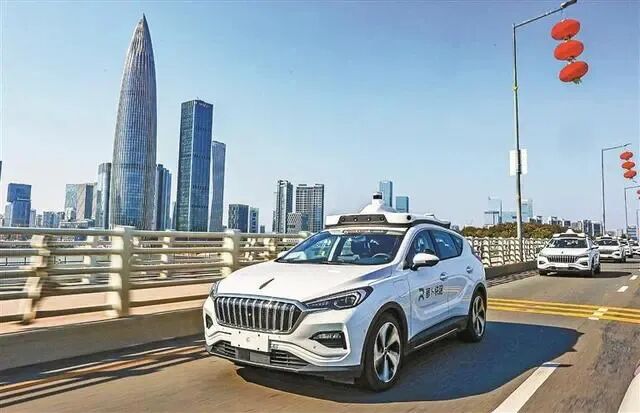Shenzhen unveils new regulations to support fully driverless vehicle testing, lower road test barriers
Beijing (Gasgoo)- Shenzhen Municipal Transportation Bureau recently released a revised draft of the "Implementation Guidelines for Road Testing and Demonstration Applications of Intelligent Connected Vehicles (Draft for Public Opinion)", soliciting public feedback, according to a press release Shenzhen Fabu (the Shenzhen Municipal Government Information Office's official WeChat account) issued on October 11.
This revision introduces several adjustments aimed at advancing the development and application of autonomous driving technology.
Key changes in the revised draft include support for fully driverless testing scenarios, allowing businesses to conduct road tests and demonstration activities without a driver on board. This move provides conditions for enterprises to validate autonomous driving technology in complex scenarios and encourages the rollout of high-level autonomous driving products.

Photo credit: Shenzhen Fabu
Additionally, the revision proposes the establishment of a mutual recognition mechanism for test results across different locations, simplifying the application process and reducing costs for companies testing autonomous vehicles in Shenzhen. This is expected to attract more Chinese firms to carry out driverless vehicle tests in the city.
To reduce the cost for businesses, the revised draft also adjusts vehicle inspection requirements. First-time applicants must conduct autonomous driving function tests and 1,000 kilometers of real-world testing, with no less than 2% of their fleet undergoing these assessments. Moreover, vehicles from the same batch with identical models, systems, and architectures will be exempt from repeating autonomous driving function tests and real-world trials, thus easing the burden on enterprises.
The threshold for road test applications has also been lowered. The number of vehicles allowed for first-time applications for driverless testing or demonstrations has increased from the current limit of five to ten, while the number of vehicles for unmanned cargo tests or demonstrations can now reach up to 20, encouraging companies to prioritize cargo vehicle testing.
Meanwhile, revisions have been made to traffic accident responsibility guidelines. The phrase "no traffic violations and no traffic accidents where the testing vehicle side is responsible during road testing/demonstration" has been replaced with "no traffic violations and no traffic accidents where the testing vehicle side assumes primary or higher responsibility during testing/demonstration".
According to industry data, by 2024, the total length of fully driverless testing roads in China is expected to reach approximately 9,800 kilometers, with over 710 driverless vehicle licenses issued. Cities such as Beijing, Guangzhou, and Wuhan are showing clear trends in the adoption of autonomous driving. As of May this year, Shenzhen has opened a cumulative total of 2,101 kilometers of testing and demonstration roads, accounting for nearly a quarter of the city's total road mileage, ranking among the top in China's first-tier cities. In 2024, Shenzhen's intelligent connected vehicle industry cluster is projected to exceed 100 billion yuan in added value for the first time, reaching 102.37 billion yuan, with the highest growth rate among the city's top 20 strategic emerging industries.
Gasgoo not only offers timely news and profound insight about China auto industry, but also help with business connection and expansion for suppliers and purchasers via multiple channels and methods. Buyer service: buyer-support@gasgoo.com Seller Service: seller-support@gasgoo.com
All Rights Reserved. Do not reproduce, copy and use the editorial content without permission. Contact us: autonews@gasgoo.com.